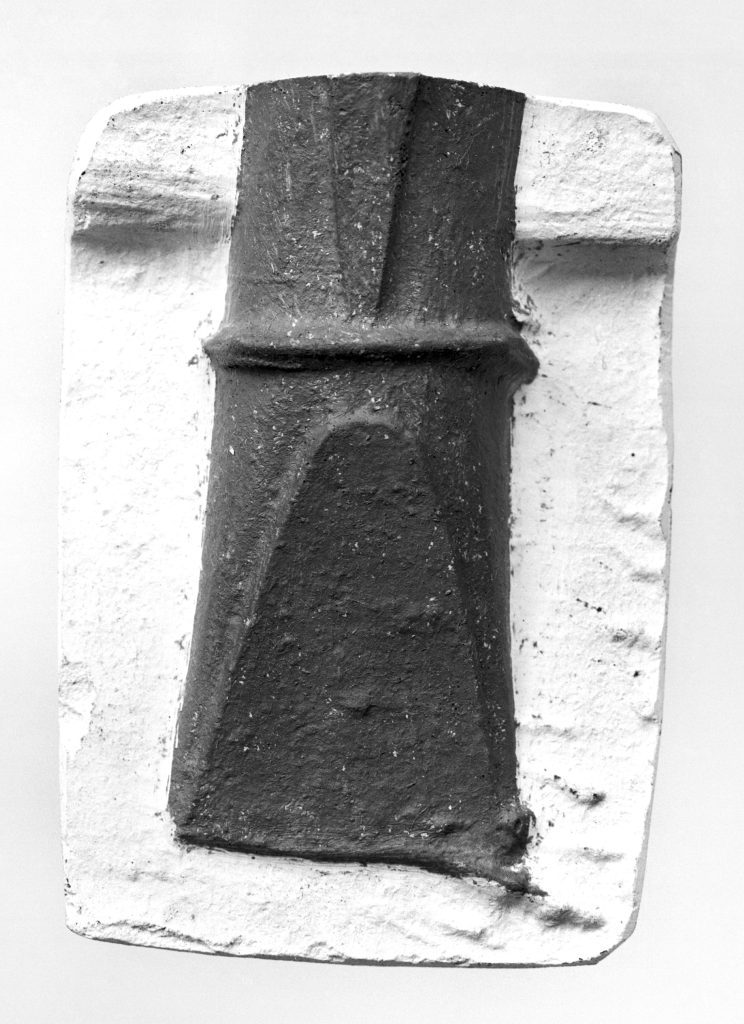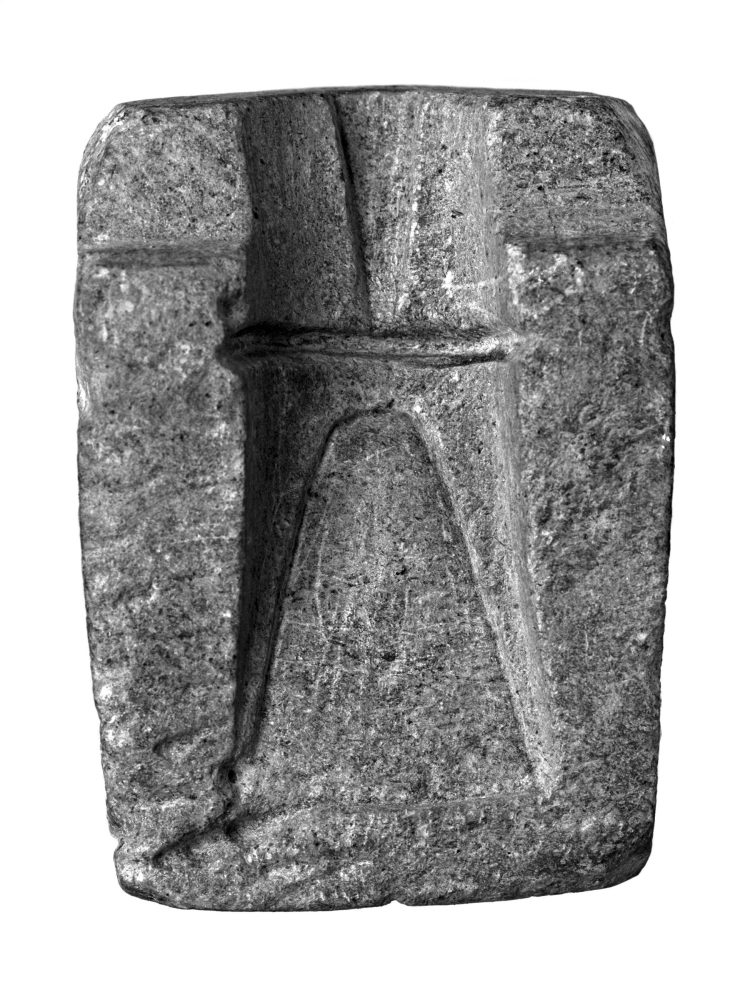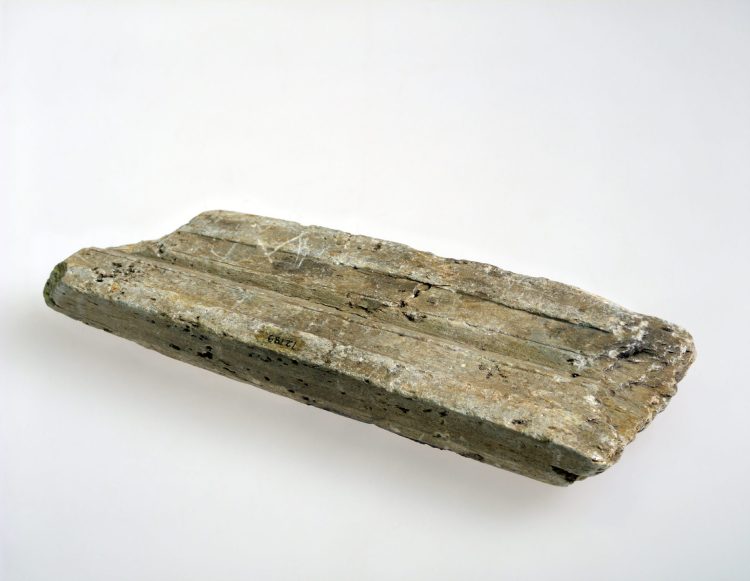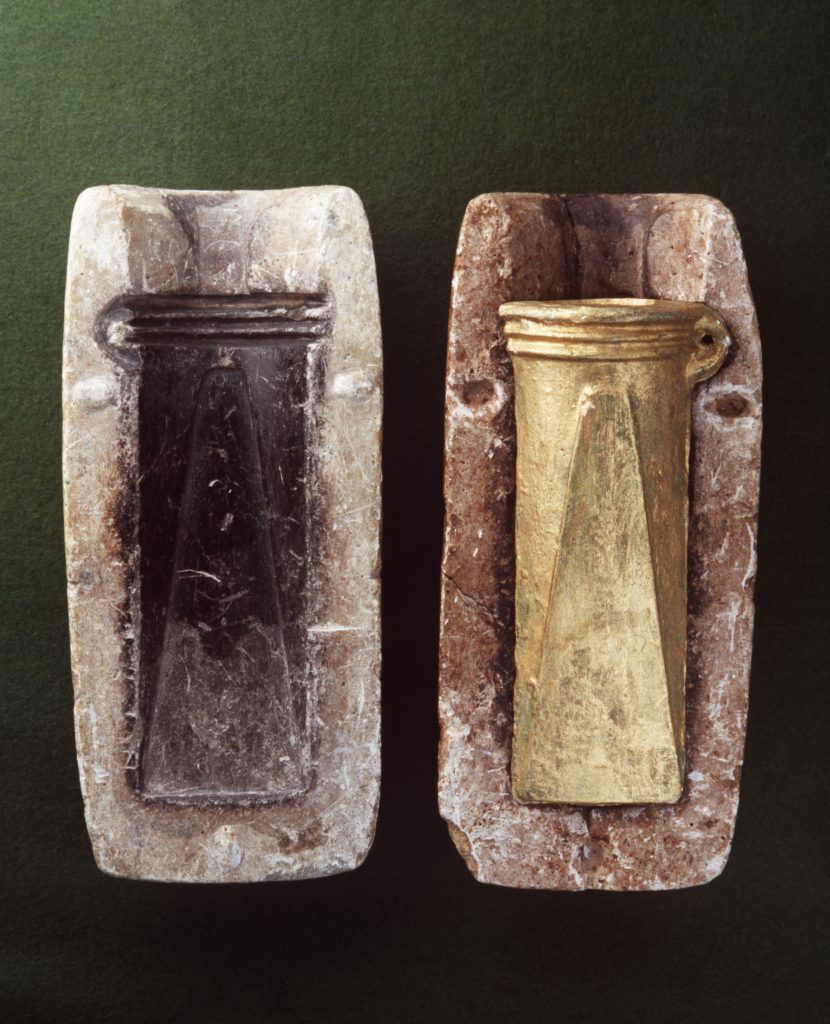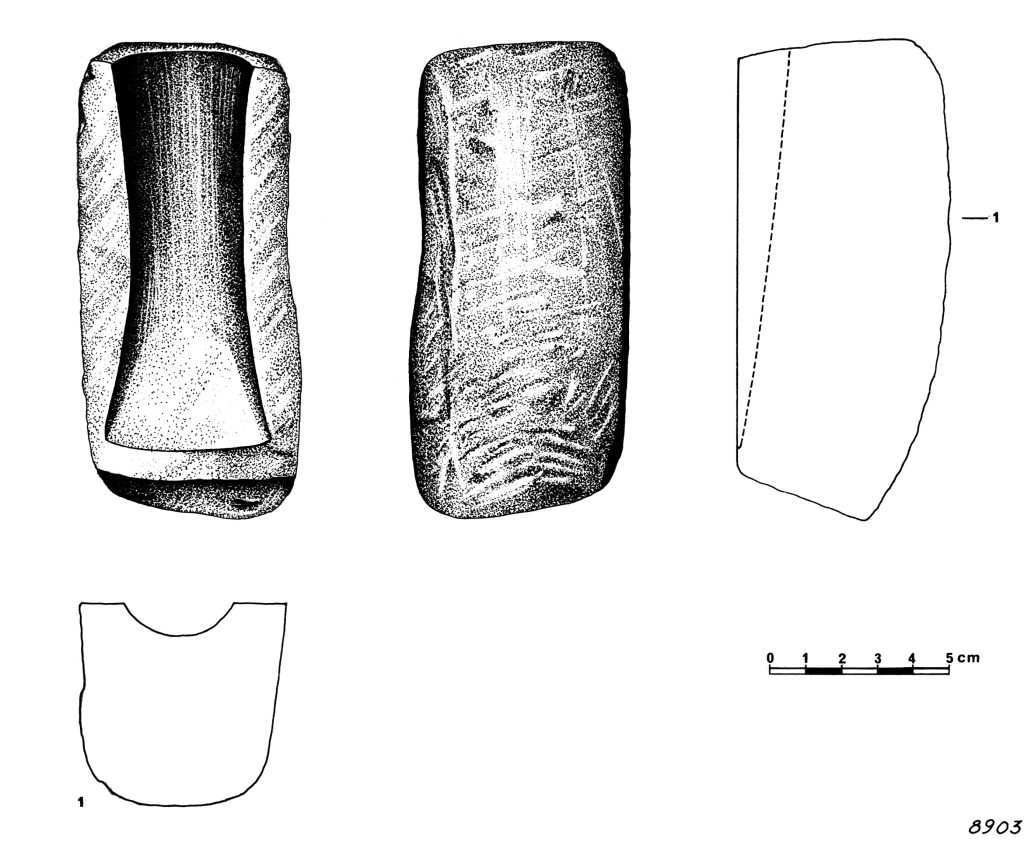B14186/21: Fragment of a small grey soapstone mould. The mould is broken at both ends. The cavity is for a possible arrowhead, similar to Baudou’s Lanzetten type V A (1960), alternatively a knife/dagger. Length: 3.7 cm. Width: 1.9-2.1 cm
B14186/24: Small fragment of bronze, bent into an angle. It could possibly have come from a weapon, e.g. a spearhead or sword/dagger (Engedal 2010), although this cannot be determined. Found in layer VI, dated to LN II. Length: 5.5 mm.
B14186/25: Rivet head. The top is conical and somewhat worn. Underneath, there are two casting seams radiating from the centre to the edge. The pin is broken and missing, but would have been thin. Found on top of layer VIII, dated to LN I-II based on diagnostic finds. Width: 6.9 mm
B14186/26: Fragment of bronze object, most likely an axe that has been chopped up for re-melting. The fragment is rectangular and massive, the original surface is visible. On one side there is a small round indentation, probably remains of the original decoration. There are two deep grooves, possibly chop marks. Found between layer VI and V, dated to LN II-EBA II. Measurements: 24.5 x 14.3 x 12.5 mm
Location:
Ve, Årdal, Parish and Fjordane
Context:
Found in a large mountain shelter, Skrivarhelleren, in Moadalen, 790 m.a.s.l. in the inner part of the Sognefjord. Helleren was excavated in 1987-1989, and a rich collection of faunal remains and organic material, as well as stone and flint objects, was found. Among the finds are amber and bone beads, bone needles, awls, slate and bone pendants, pottery, bifacial arrowheads, bone arrowheads, fragments of stone axes and fragments of flint daggers. Seven main layers were identified, and the bronze fragments were found in layers VIII (B14186/25), VI-V (B14186/26) and VI (B14186/24), while the mold was found in layer IV (Prescott 1991). In addition, several small bronze fragments were found in ocher samples taken from a hearth at the same level as B14186/26, which had been exposed to 1100-1200ºC, indicating metallurgical activity (Prescott 1991). The slab was used from the Late Neolithic to the Iron Age.
Date:
Based on the stratigraphy and radiocarbon dating, the bronze fragments are dated to LN II – Early Bronze Age period 2. The shape is from a layer that was dated to the Younger Bronze Age.
